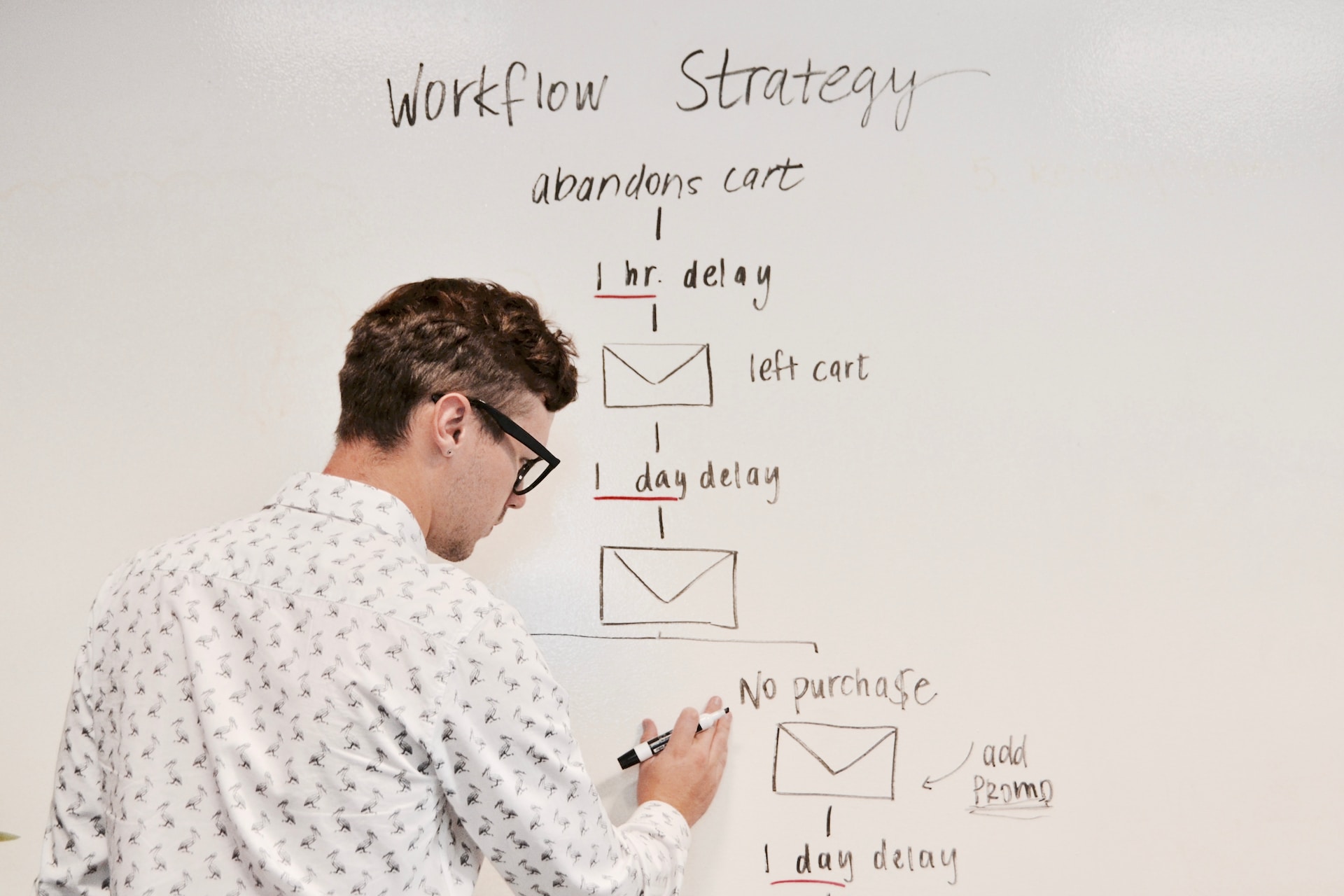For most businesses, a down market means taking safety precautions and staying away from ambitious growth plans. A recession is often seen as a time for changing focus to self preservation, cutbacks and bracing for an expected slowdown in businesses, however for scale-ups backed by ambitious investors, this is often unrealistic.
For many scale-up founders, recession can increase the pressure to become profitable. This can be caused by uncertainty securing additional funding rounds during a down market or a push from existing investors to see a return on their investment even faster.
These pressures may leave founders wondering, how can I manage effective product and roadmap delivery in a down market?
At Deazy, we understand the business of VC and PE funded scale-ups. As a Series A funded business ourselves, our team knows firsthand what it's like to navigate product delivery in challenging times, as well as our Business Development and Product Managers having worked with dozens of scaleups since our inception in 2018.
To give you a helping hand during these economically turbulent times, we took it upon ourselves to gather 5 key lessons from our team about delivery strategy during a down market.
Learning 1: Don’t rush the process of listening to your users and understanding your target audience.
Business owners often see the process of product discovery as overly time consuming and tedious. Teams keen to achieve profitability as fast as possible, make the mistake of cutting this crucial step short in order to begin delivering their project. Unfortunately, choosing to rush this process can have many negative consequences.
Speaking about the importance of this process, Deazy’s Senior Product Manager, Ella-Jo Gange shares her insight: “Before any build is started you need to ensure that full Product Discovery has been completed. This will help you identify who your target audience and key users are upfront, so we’re targeting build to the right people.”
“Remembering that the end user is the most important person in the whole process is crucial. You need to make decisions for them first, without considering what would be easier for your development team or businesses.” Ella-Jo continues.
A thorough and complete discovery process is time consuming. In the short term, this can feel frustrating and give the impression that things aren’t moving quickly enough. However, this crucial work ensures that once the final product is complete it will be able to serve its target audience effectively.
Working alongside a delivery expert, and having additional help with your discovery process can help you get a third party opinion about whether you are making the right decisions about changing discovery priorities. Bringing a delivery manager onboard, even part way through the process, can allow you to get a more comprehensive overview of what else needs to be completed.
Furthermore, product managers will be able to give great insight into what aspects of your product delivery will be useful for impressing stakeholders in board meetings.
Giving enough time and energy to these key processes will give you assurance that your project is suited to your users and will minimise the risk of having to rebuild or change features once your product has been delivered.
A thorough discovery process will allow you to understand your customers better and continue to benefit you long after the end of an economic downturn.

Learning 2: Hiring freezes are rarely as strict and long-lasting as expected.
During 2022, headlines around the globe spoke about the abrupt hiring freezes and layoffs implemented at major tech companies, such as Microsoft, Google and Twitter. Many smaller businesses also chose to follow in the footsteps of these tech giants, in order to brace for recession looming on the horizon.
For businesses looking to continue rapid growth and project delivery, being told by their board that they need to stop hiring can be scary. Without new talent being on-boarded, existing team members risk becoming overstretched and burned out. Having to halt team expansion can also slow down a company’s velocity in meeting promised deadlines.
We spoke with one of Deazy’s Senior Businesses Development Managers, Sam Nunnerley, about the topic of hiring freezes and asked him to share his thoughts:
“In my experience, hiring freezes are rarely as strict - or as long - as you might expect at the outset.” said Sam. “Although they’re typically in response to periods of rapid headcount growth, it’s all about controlling fixed costs, taking stock of your current capabilities and optimising your delivery.”
Hiring freezes create a tricky problem for businesses. Often, directors find that taking your foot off the pedal (even a brief hiatus) can really impact your ability to deliver against your roadmap as planned.
However, getting the right people in the right role takes time.
Sam believes the solution to navigating hiring freezes and the long hiring process is “to lean on your external partners to bridge capacity and capability gaps while you re-organise and align your internal resources.”
“The flexibility of offering’s like Deazy allow businesses to continue to deliver at pace, without the worry of adding to fixed costs.” continues Sam.
“My recommendation would be to find a partner that is willing to work with you for the long term, who understands the needs of scaling businesses and are willing (and able) to ramp up and down to support you as you need.”
Learning 3: High-growth businesses with limited resources and varying demands can benefit from a multi-threaded delivery strategy.
High growth businesses have to contend with varying demands that result in an ever evolving roadmap. Recession also exacerbates the challenges of further constraining resources and funding.
“In these scenarios, it’s really helpful to consider your overall delivery strategy and multi-thread different delivery models to reach your goal as cost and time as effectively as possible.” says Sam Nunnerley.
So how do you find the correct delivery model to work with your unique business demands?
We believe that making sure you understand your exact goals for the upcoming weeks, months, quarter and year can help better define what development work you need done now, and what can be left for the future.
What's more, this planning can help you determine when you need to build new solutions or when an out of the box alternative will work just fine. Looking holistically at your roadmap and allocating work across all of your available resource channels can help you strategically manage your costs - and ultimately your cash runway.
Sam continues: “The biggest challenge I see is that scale-ups are running fast and lack the time (and the headspace) to sit down and write out requirements, therefore the default solution tends to be adding additional resources to the team and managing requirements as you go.”
“This is another great opportunity to lean on external partners, not only for development execution, but also scoping and requirements definition (Product Management). Digital roles across the board are in short supply (not just developers) and so don’t be afraid to open up and look at where external partners can support you in this area too.”

Learning 4: Don’t ignore the importance of a product manager.
Working with businesses of all sizes first hand has allowed us to find interesting patterns which connect businesses across the board, regardless of industry, goal or size. One of these key findings is a differing attitude toward hiring various outsourced talent. We’ve found that while many organisations will readily accept the need for engineering support, accepting product management help is often far more difficult.
This difficulty is based on various reasons. For scale-ups, due to the nature of building a business, founders are often extremely close to their product. While this is completely understandable, this investment in one’s own product can lead to a lack of flexibility in allowing a product manager into the process. This hesitance to get external input while overseeing a project can lead to the same issues of burnout and overstretching, which we see time and time again in scaleup engineering teams.
For larger enterprise businesses, the same resistance to allowing a product manager into the development process is based on different reasoning. In these scenarios, this lack of flexibility is often due to outdated processes and roles within the companies’ structures and organisation.
We asked Sam to share his thoughts on this inflexibility:
“In both instances, flexible product management could add huge value. I think the hesitance in exploring this stems from the belief that bringing in flexible product resources is counterproductive because of the time it’ll take to onboard resources to get up to speed and start delivering value.”
So how does embracing a product manager role look like in action?
“Lean and considered use of product management for clearly identified gaps can turbo-charge your investment in development. It’s all about enabling the dev team to deliver to the highest velocity and quality.”
We asked Sam to tell us one tip he believes best helps businesses embrace the new world of product managers: “Be open minded and be honest about where you could use product management support and acknowledge where external support can enhance (not replace) your internal product knowledge.”
Learning 5: Team augmentation or embedding full squads, allows businesses in a down market to get technical expertise from external sources while keeping technical knowledge in-house.
The concept of team augmentation is still in its infancy. However, we believe this flexible and agile way of adding resources to your team is the key to effectively adding development resources to your team in a down market.
So what is team augmentation?
Team augmentation refers to the process of slotting additional dev resource into your existing team. This model is perfect for increasing capacity in your existing team to meet demand, as it allows you to add skilled developers on a flexible basis while still retaining product and project knowledge within your core in-house team.
You might be asking yourself, how does this process differ from hiring and onboarding a freelancer? We asked Sam, our Senior BDM this question:
“We believe that sourcing developers from teams leads to higher quality and velocity as they are supported by robust coaching and mentoring structures (team leads and engineering managers on the ground) supporting them to problem solve and deliver faster.”
Sam continues: “Our developers are only ever placed on a retained basis (no split allocations) meaning you can be confident in their dedication and investment to your team and business with no other projects competing for priority.”
Our robust ecosystem of 6000+ developers from 85 global teams, covers a huge range of technologies and capabilities. We have an advantageous oversight of supply and demand, due to our proactive management style, which allows us to balance availability and quality, resulting in a truly on-demand experience for our clients.
So what makes us different from our competitors, also offering their own version of team augmentation?
“We continually future-proof our supplier base too, so you can benefit without the management overhead. This is especially important as technologies continue to evolve at pace, from newer languages such as Flutter & GoLang, to transformative next generation technology like blockchain, the metaverse and generative AI.”

Conclusion
While a down market may signal a time for caution for many businesses, it doesn't have to be a time to slow down for ambitious scale-ups. With the right delivery strategy, you can continue to grow and thrive even during challenging times.
The five learnings from our team offer valuable insights for any scale-up looking to navigate the complexities of product delivery during a down market.
By taking the time to listen to users, being adaptable when it comes to hiring freezes, and implementing a multi-threaded delivery strategy, businesses can continue to innovate, grow, and thrive even when faced with a challenging economic climate. What's more, finding the right technology partner (with expertise best suited to your business) can help you stay ahead of the curve, deliver high-quality products and set yourself up for long term success.
